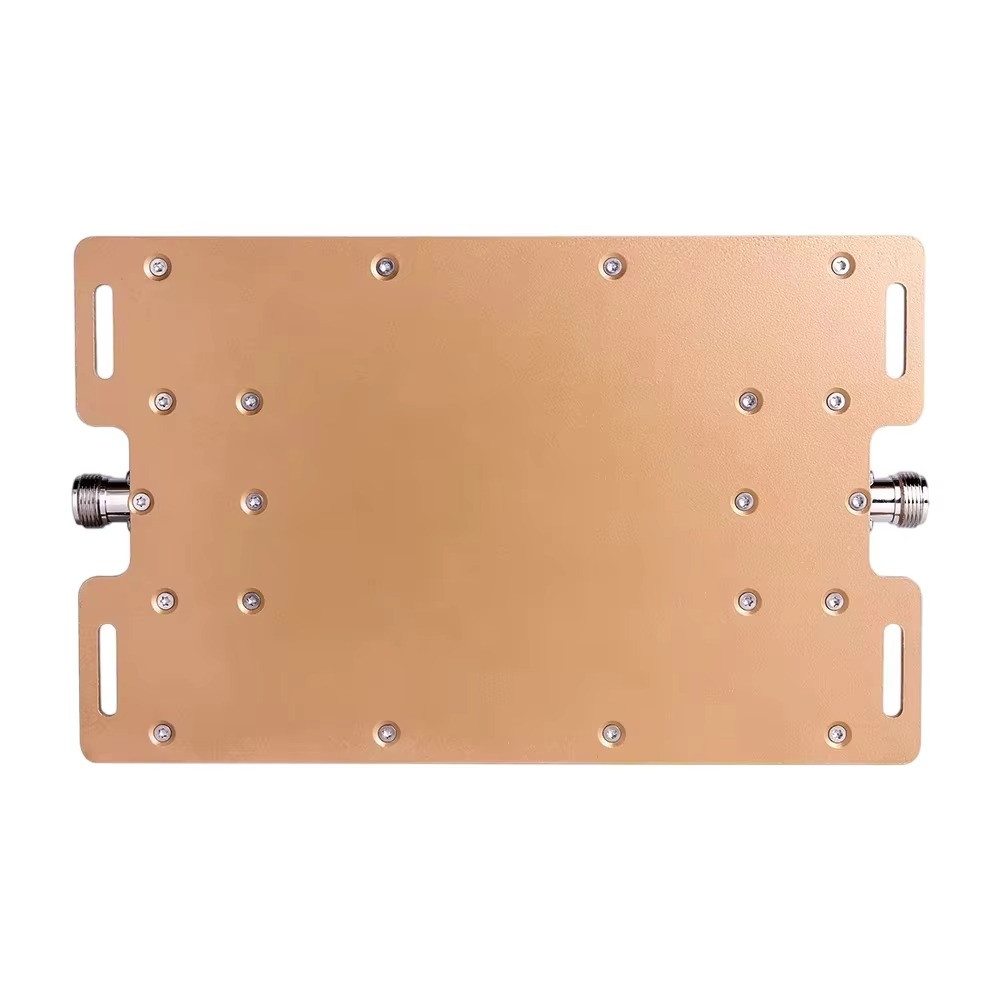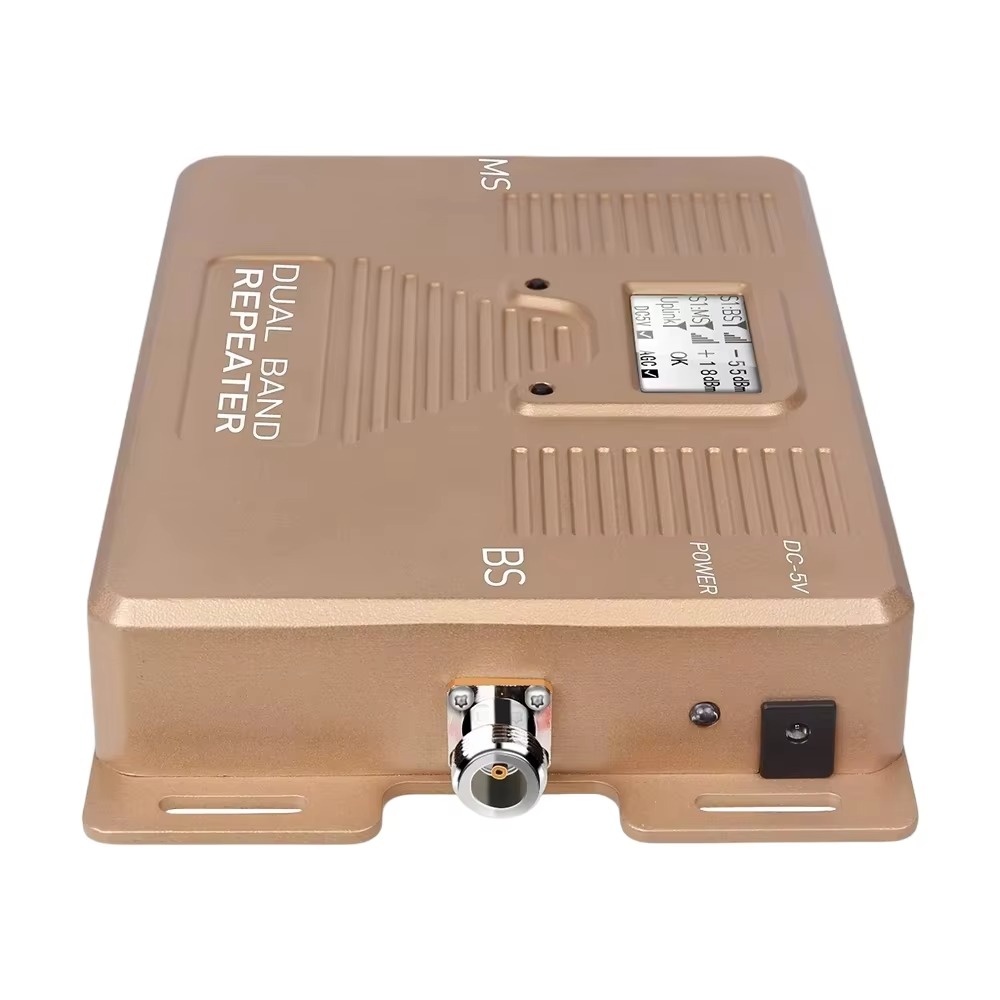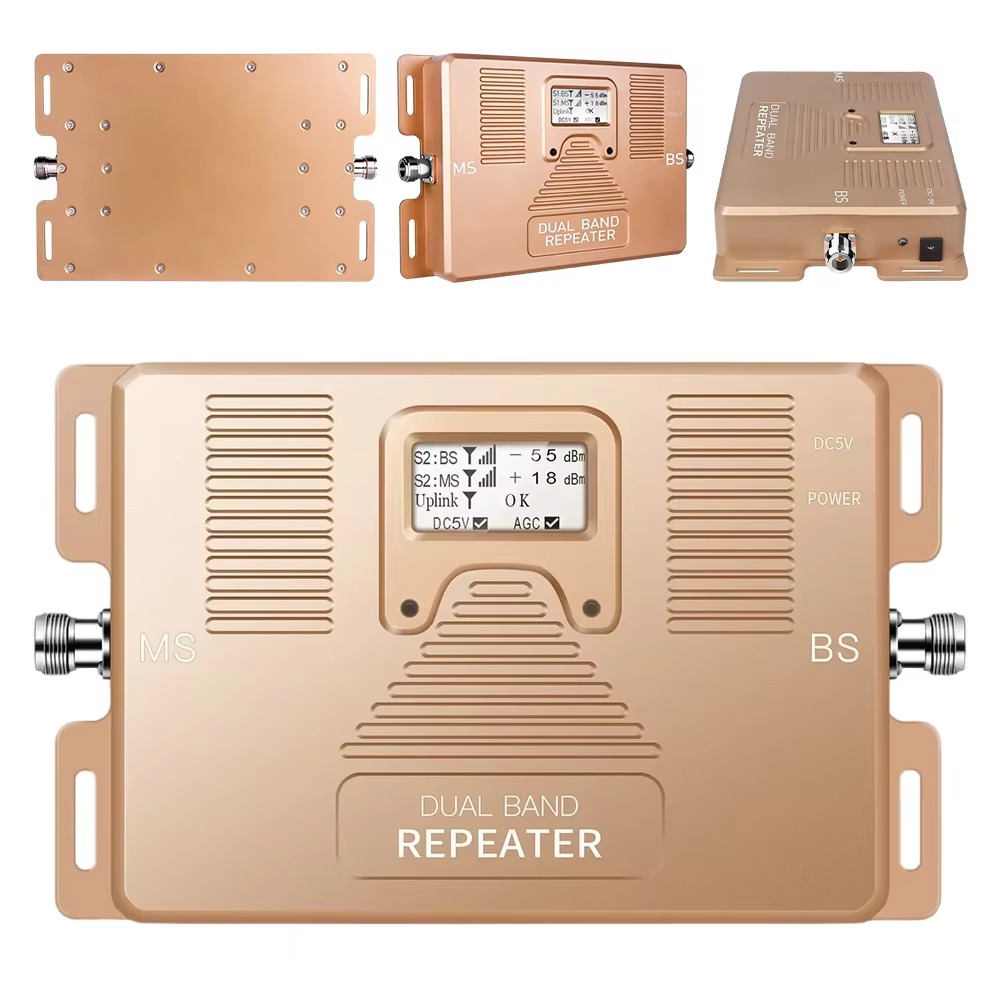OverView
A low-profile dual-frequency GNSS antenna is a specialized antenna designed to receive signals from multiple Global Navigation Satellite Systems (GNSS)—such as GPS (USA), GLONASS (Russia), Galileo (EU), and BeiDou (China)—on two or more distinct frequency bands, while maintaining a very shallow physical height, or z-axis profile. The term "low-profile" typically refers to antennas with a height that is a small fraction of the wavelength of the signals they are designed to receive, often just a few millimeters tall. "Dual-frequency" indicates its ability to operate on two primary bands, most commonly the L1 (1575.42 MHz) and L5 (1176.45 MHz) bands for GPS, or their equivalents (E1/E5a) for Galileo.
The drive for this form factor is primarily driven by industrial design and application constraints. Consumers and manufacturers alike reject devices that are bulky or aesthetically unpleasing. For applications such as:
Modern Automotive Integration: Embedding into car roofs, dashboards, or mirrors without creating a visible protrusion.
Consumer Electronics: Integration into smartphones, tablets, wearables, and digital cameras.
Unmanned Aerial Vehicles (UAVs): Mounting flush on the fuselage of drones to maintain aerodynamics.
Portable and Wearable Devices: For asset tracking, sports watches, and emergency locator beacons.
A traditional GNSS antenna, often a patch or quadrifilar helix, can be too tall for these applications. However, the need for performance has simultaneously increased. Single-frequency (L1-only) antennas are susceptible to ionospheric delay, a major source of positioning error. Dual-frequency reception allows a receiver to measure and correct for this delay, significantly improving accuracy, enabling faster Time to First Fix (TTFF), and providing greater robustness. The low-profile dual-frequency antenna is the solution to this dilemma: it delivers the performance benefits of dual-frequency GNSS in a package that can be seamlessly integrated into modern, sleek products.
The development of this antenna type is a testament to advancements in electromagnetic simulation software, sophisticated manufacturing techniques, and novel materials. Engineers must overcome significant physics-based challenges, as reducing an antenna's height typically compromises its bandwidth and efficiency. Achieving robust performance across two widely separated frequency bands (L1 and L5 are 399 MHz apart) within an extremely constrained volume is a non-trivial feat.
In essence, the low-profile dual-frequency GNSS antenna is a key enabling technology for the next wave of location-aware devices. It moves high-precision positioning from a specialized, external tool into the mainstream, hidden from view but fundamental to the functionality of the products we use every day. It represents the democratization of accuracy, making advanced GNSS capabilities accessible and invisible.
Design and Construction
The design and construction of a low-profile dual-frequency GNSS antenna is a complex exercise in electromagnetic engineering, material science, and mechanical design. It involves overcoming fundamental physical limitations to achieve wide bandwidth and good efficiency within a severely restricted volume. Every aspect, from the geometry of the radiating element to the composition of the substrate, is meticulously optimized.
1. Radiating Element Architecture:
The choice of radiating element is paramount. The standard microstrip patch antenna, while low-profile, has a narrow bandwidth that is inversely proportional to its height and the dielectric constant of the substrate material. Making it physically smaller naturally reduces its bandwidth, making dual-frequency operation extremely difficult. Therefore, engineers employ advanced techniques to overcome this:
Stacked Patches: This is a common and effective approach. Two separate patch elements, each tuned to a different frequency (e.g., a larger patch for L1 and a smaller patch for L5), are stacked on top of each other, separated by a dielectric layer. The upper patch is electromagnetically coupled to the lower one. This allows for independent tuning of each band but increases the overall z-height slightly, pushing the boundaries of "low-profile."
Slotted / Aperture-Coupled Patches: Instead of a direct probe feed, the patch is excited through a slot or aperture in the ground plane. This technique can enhance bandwidth and allow for better isolation between the antenna and the feed network, which is crucial for clean radiation patterns.
Planar Inverted-F Antenna (PIFA) and Derivatives: PIFAs are renowned for their low profile. By adding additional resonating arms or slots, a single PIFA structure can be modified to operate on multiple bands. Their compact size makes them ideal for consumer devices like smartphones.
Fractal and Metamaterial-Inspired Elements: These advanced techniques use complex, space-filling geometries (fractals) or artificial materials with unusual electromagnetic properties to create electrically small antennas that effectively manipulate waves to achieve multi-band performance and size reduction that defies traditional design rules.
2. Substrate Materials:
The material on which the antenna is fabricated is critical. Standard FR-4 PCB material is too lossy at GHz frequencies and has a low dielectric constant, requiring a larger antenna size. Low-profile antennas use specialized substrate materials:
High Dielectric Constant (High-Dk) Ceramics: Materials like alumina allow for a much smaller physical size because the wavelength within the material is shortened. However, they often result in reduced bandwidth and lower efficiency due to increased losses.
Low-Loss PTFE Composites: Materials like Rogers RO4000® series offer a good balance. They have a moderate dielectric constant and very low dissipation factor (loss tangent), preserving efficiency and bandwidth while still allowing for a smaller size than what is possible with air or FR-4.
3. The Ground Plane:
The size and quality of the ground plane are more critical for a low-profile antenna than for almost any other type. The antenna's performance—its bandwidth, efficiency, and radiation pattern—is intensely coupled to the ground plane it is mounted on. The antenna's specified performance is usually only achievable when mounted on the exact ground plane size recommended by the manufacturer. In a device like a smartphone, the phone's main PCB itself often must act as the ground plane, and its layout can significantly impact antenna performance. This makes co-design with the host device essential.
4. Feeding and Matching Networks:
Impedance matching is a significant challenge. The antenna must present a 50-ohm impedance to the receiver across both operating bands. This is often achieved with intricate matching networks printed directly onto the substrate. These networks use microstrip traces, inductors, and capacitors to tune out reactance and ensure maximum power transfer from the antenna to the receiver.
5. Integration and Housing:
Active Components: Most include an integrated Low Noise Amplifier (LNA) to compensate for potential efficiency losses due to miniaturization and to overcome cable loss. This LNA must be ultra-miniaturized itself.
Filtering: Integrated band-pass filtering is crucial to reject out-of-band interference from co-located radios (cellular, Wi-Fi, Bluetooth), which can easily desensitize the GNSS receiver.
Radome: The protective cover must be extremely thin and made of material with stable dielectric properties over temperature to avoid detuning the carefully optimized antenna.
In summary, the construction of a low-profile dual-frequency GNSS antenna is a holistic process. It is not merely about designing a radiator but about engineering a complete system: the element, the substrate, the ground plane, and the feeding network must all be co-optimized through iterative electromagnetic simulation and prototyping to wrestle acceptable dual-band performance from an incredibly small volume.
Working Principles
The working principles of a low-profile dual-frequency GNSS antenna follow the same fundamental physics as any other antenna: it is a transducer that converts electromagnetic waves from satellites into electrical signals. However, its operation is defined by how it accomplishes this within severe physical constraints, which leads to unique behaviors and performance trade-offs.
Fundamental Operation: Resonance and Bandwidth
An antenna operates efficiently at its resonant frequency, where its electrical length is a specific fraction of the wavelength. For a low-profile antenna, the physical height is much smaller than a quarter wavelength, which traditionally would make it non-resonant and inefficient. Engineers force it to resonate by loading it—either with a high-dielectric material (which effectively slows down the waves, making the antenna electrically longer than it is physically) or with clever geometric shaping (like the folded structure of a PIFA).
The core challenge is bandwidth. A simple, small antenna has a very high Q factor, meaning it is tuned to a very specific frequency and operates poorly at even slightly different frequencies. GNSS requires not just one frequency but two bands (L1 and L5) that are 399 MHz apart. The antenna must therefore be designed to have two separate, well-defined resonant modes. Techniques like stacked patches create two distinct resonators, while a slotted patch perturbs the current flow on a single element to create two resonant paths.
Signal Reception and the Role of the Ground Plane
As the right-hand circularly polarized (RHCP) satellite signals arrive, they induce currents on the antenna's radiating element. The behavior of these currents is heavily influenced by the ground plane. For a low-profile antenna, the ground plane is not just a reflector; it becomes an active part of the radiating system. The currents on the antenna element couple strongly to currents on the ground plane. The size of the ground plane directly affects the antenna's input impedance and radiation pattern.
A ground plane that is too small can lead to a distorted radiation pattern with poor gain at low elevation angles, making it harder to acquire satellites near the horizon. It can also shift the resonant frequency of the antenna. This is why the performance of these antennas is so application-specific and must be validated in the final host device.
The Low Noise Amplifier (LNA): A Critical Compensator
Due to their small size, low-profile antennas often have lower inherent gain and radiation efficiency than their larger counterparts. They capture less energy from the passing waves. To ensure a strong enough signal reaches the receiver, an integrated LNA is almost always used. This amplifier boosts the signal power while adding minimal internal noise (low noise figure). This compensation is crucial; without it, the signal might be below the noise floor of the receiver, rendering the antenna useless. The LNA also provides isolation between the antenna and the downstream cable and receiver.
Delivering a Clean Signal
The antenna's integrated filters play a vital role once the signal is captured. In a modern device, the GNSS antenna is placed perilously close to powerful transmitters like cellular modems. These transmitters can broadcast signals that are billions of times more powerful than the faint GNSS signals. The filters in the antenna's front-end are designed to reject these out-of-band signals, preventing them from overloading the LNA and the GNSS receiver, which would cause a loss of lock on the satellites.
In operation, the antenna functions as a highly selective, sensitive, but physically constrained collector. It resonates at two specific frequency bands, captures the RHCP signals, immediately amplifies them to overcome its own size limitations, filters out interfering noise, and delivers a clean, boosted signal to the receiver for processing. Its entire design is a careful ballet of electromagnetic principles, all orchestrated to perform a difficult task within a very small space.
Advantages and Challenges
-
The adoption of a low-profile dual-frequency GNSS antenna offers compelling advantages for product design but also introduces significant engineering challenges that must be carefully managed.
Advantages:
Aesthetic and Industrial Design Freedom: The primary advantage is the ability to integrate high-performance GNSS into products without compromising their form factor. This enables sleek, consumer-friendly designs for automobiles, phones, and wearables where a protruding antenna is unacceptable.
Dual-Frequency Performance: Despite its size, it delivers the key benefits of dual-frequency operation:
Ionospheric Error Correction: By measuring the delay difference between the L1 and L5 signals, the receiver can calculate and correct for the error introduced by the ionosphere, significantly improving position accuracy, often from meter-level to sub-meter level.
Faster Time to First Fix (TTFF): The receiver can use the L5 signal, which has a higher chipping rate and is more robust, to acquire satellites more quickly, especially from a cold start.
Improved Robustness: Having two frequencies provides redundancy. If one frequency is jammed or degraded, the receiver can often continue operating on the other.
Durability and Reliability: A flush-mounted, low-profile antenna is less susceptible to damage from impact, weather, or vandalism compared to an external whip or mast antenna. It is protected within the device's housing.
Reduced Wind Load and Drag: For automotive and UAV applications, the aerodynamic benefits are significant, reducing noise and energy consumption.
Challenges and Limitations:
Performance Trade-Offs: This is the fundamental challenge. Miniaturization inevitably involves compromises:
Reduced Bandwidth: Achieving wide bandwidth at a small electrical size is difficult. While sufficient for GNSS bands, it leaves little margin for manufacturing tolerances or environmental changes.
Lower Efficiency: Smaller antennas tend to have lower radiation efficiency. They simply capture less energy from the incoming radio waves. This must be compensated for with a higher-gain LNA, which increases power consumption.
Gain Pattern Limitations: The radiation pattern can be less ideal than that of a larger antenna. Gain at low elevation angles is often sacrificed, which can slightly reduce the number of satellites available in open-sky conditions and more significantly impact performance in partially obstructed environments.
Ground Plane Dependency: The performance is hyper-sensitive to the size and layout of the ground plane. This makes the antenna not a standalone component but a system-level part. Its performance must be characterized and tested within the final product, adding complexity to the design process.
Increased Design Complexity: Designing a successful low-profile dual-frequency antenna requires sophisticated EM simulation tools (e.g., HFSS, CST) and significant expertise. The tuning process is delicate and iterative.
Susceptibility to Environmental Detuning: The proximity of the antenna to other materials—like the device's plastic housing, the user's hand on a phone, or a car's windshield glass—can slightly alter its dielectric environment, detuning it and shifting its resonant frequency. Designs must be robust to these expected variations.
Cost: Specialized substrate materials, precise manufacturing tolerances, and integrated active components (LNA, filters) make these antennas more expensive than simple passive patches.
In conclusion, the decision to use a low-profile dual-frequency antenna is a strategic trade-off. The advantages in integration and aesthetics are tremendous, but they are paid for with increased engineering effort, unit cost, and acceptance of certain performance limitations compared to larger, external antennas. The key to success is understanding these trade-offs and designing the entire system around the antenna's characteristics.
Applications and Future Trends
-
The unique blend of small size and enhanced performance has opened doors for low-profile dual-frequency GNSS antennas across a vast and growing range of applications. They are a key enabling technology for the next generation of connected and intelligent devices.
Applications:
Automotive: This is a massive growth area. These antennas are embedded into roofs, dashboards, spoilers, and side mirrors for:
Advanced Driver-Assistance Systems (ADAS): Providing accurate positioning for lane-level navigation, adaptive cruise control, and automated parking.
Vehicle-to-Everything (V2X) Communication: Precise location is critical for safety messages in V2V and V2I systems.
Telematics and eCall: Accurate location for emergency services and fleet management.
Consumer Electronics:
Smartphones: The flagship application. Dual-frequency GNSS in phones enables highly accurate location for ride-hailing, augmented reality (AR) games, pedestrian navigation, and context-aware services.
Wearables: Smartwatches and fitness trackers use them for accurate pace and distance tracking for running, cycling, and hiking without needing to carry a phone.
Tablets and Cameras: For geotagging photos and field data collection.
Unmanned Aerial Vehicles (UAVs): Drones require accurate navigation for flight control, autonomous missions, and precise landing. The low profile is essential for aerodynamics and safety.
Micromobility: E-scooters and e-bikes use them for fleet management, geofencing (to control parking and speed zones), and theft recovery.
Industrial and IoT: For high-value asset tracking, logistics, and portable survey equipment where size and accuracy are both important.
Future Trends:
Tighter Integration with Other Technologies: The future lies in "combo" or "fusion" antennas that package GNSS with other radios like 5G, Wi-Fi 6/7, Bluetooth, and UWB into a single, low-profile module. This saves space and simplifies device architecture.
AI-Driven Design: Machine learning and AI algorithms are being used to explore vast design spaces for antenna geometries that would be impossible for humans to conceive, leading to even smaller and more efficient multi-band antennas.
Advanced Materials: Research into new metamaterials and ceramics promises to break current size versus bandwidth limitations, enabling even lower profiles with better performance.
Resilient Positioning: Future antennas will be designed as part of a broader resilient positioning system that deeply fuses GNSS with inertial sensors (IMUs), cameras, and cellular positioning to provide continuous accuracy even when GNSS signals are blocked.
Mass Adoption in IoT: As costs decrease, dual-frequency accuracy will trickle down from high-end devices to become standard in a wider array of IoT sensors and trackers, improving the quality of location data across networks.
The trajectory is clear: low-profile dual-frequency GNSS technology will become smaller, cheaper, more integrated, and more pervasive, forming an invisible yet essential layer of precision that empowers the intelligent devices of the future.
Conclusion
The low-profile dual-frequency GNSS antenna is a remarkable achievement in electromagnetic engineering. It represents the successful culmination of a difficult challenge: to deliver the performance benefits of advanced, dual-frequency GNSS without imposing a physical penalty on the host product's design.
This series has detailed its journey from an overview of its purpose—enabling sleek, accurate devices—to the intricate design and construction techniques that make it possible. We have explored the working principles that allow it to overcome the laws of physics through clever design and the advantages and challenges that define its practical use. Finally, we have seen its vast application landscape and the future trends that will drive its continued evolution.
In conclusion, this antenna is far more than a simple component. It is a critical enabler of modern technology. It embodies the trend towards miniaturization and integration without sacrificing capability. By making high-precision positioning invisible and integrable, it has become a foundational technology for the autonomous, connected, and location-aware world we are building. Its development is a testament to human ingenuity, proving that even within the tightest of constraints, innovation can not only survive but thrive.




































































 Language
Language
 En
En Cn
Cn Korean
Korean

 Home >
Home > 







 18665803017 (Macro)
18665803017 (Macro)













